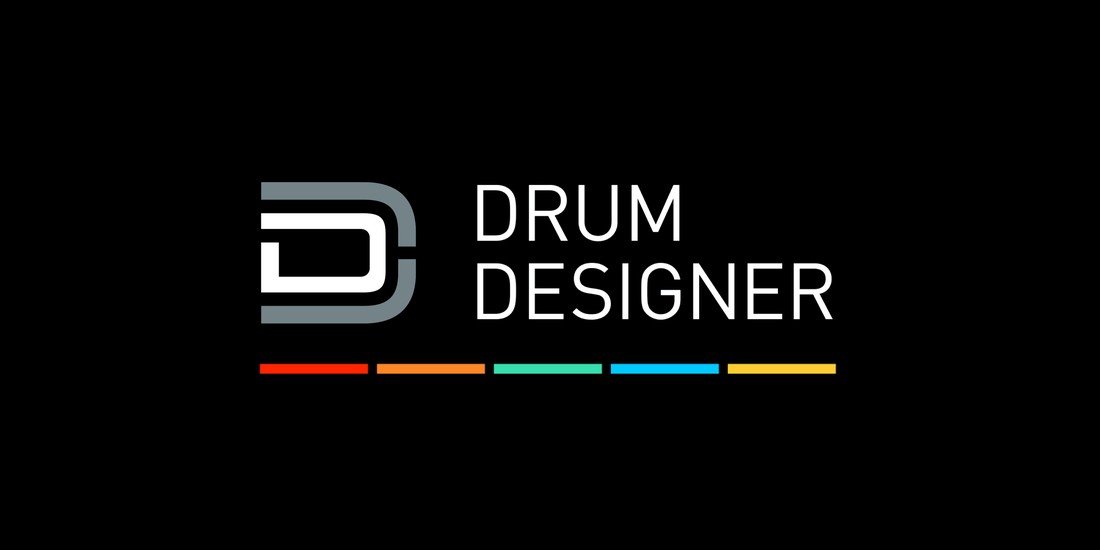UVI Drum Designer
Creating music, especially custom drum sounds, has always been a passion of mine. For years, I had a specific workflow for making electronic drum sounds. My process involved various layers of synthesis, modulation, and fine-tuning, and I wanted to simplify this into a single machine. The idea to turn my method into an actual product came when I started using the Falcon scripting engine. This is where UVI Drum Designer was born, offering producers and sound designers an unparalleled level of control and flexibility. Below are the promotional video and some overview videos.
The Four Drum Modules
Drum Designer’s sound engine is divided into four main elements: Kick, Snare, Clap, and Cymbal. Each of these engines comes with multiple layers, allowing you to tweak every detail:
- Kick Engine: This engine splits the sound into two layers—Body and Tone. Each of these can be customized with controls for pitch, pan, filtering, and even phase alignment. You can also modify the amplitude and envelope of the tone to create everything from short, snappy kicks to long, booming bass drums.
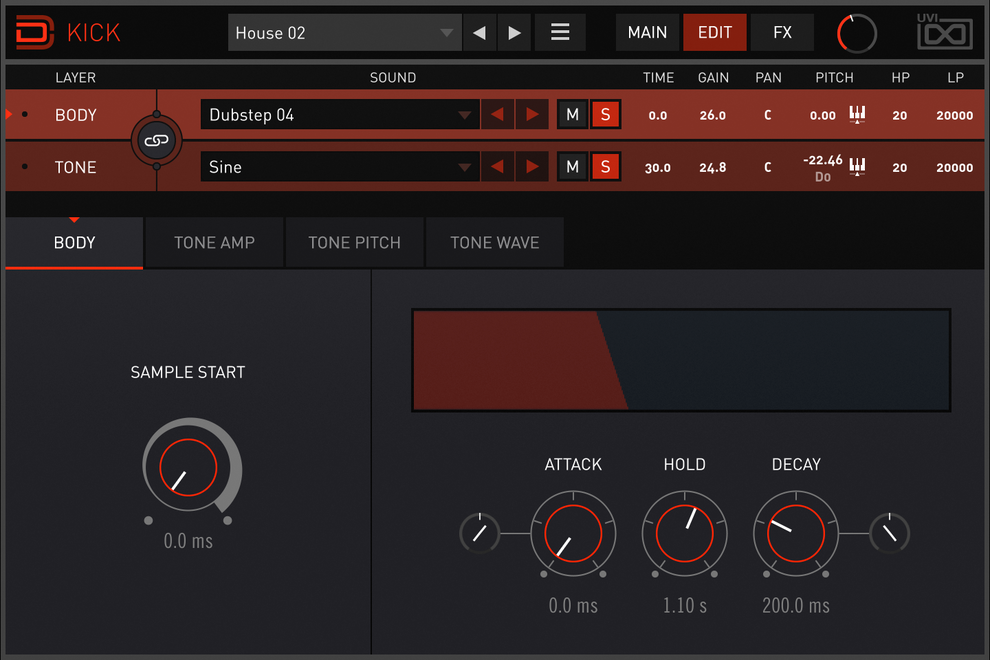
- Snare Engine: With two additional noise layers, the snare engine allows for a more complex sound design process. These noise layers can simulate room effects, ramp up transient details, or add bite to your snare. It’s also great for creating custom textures that go beyond traditional snares.
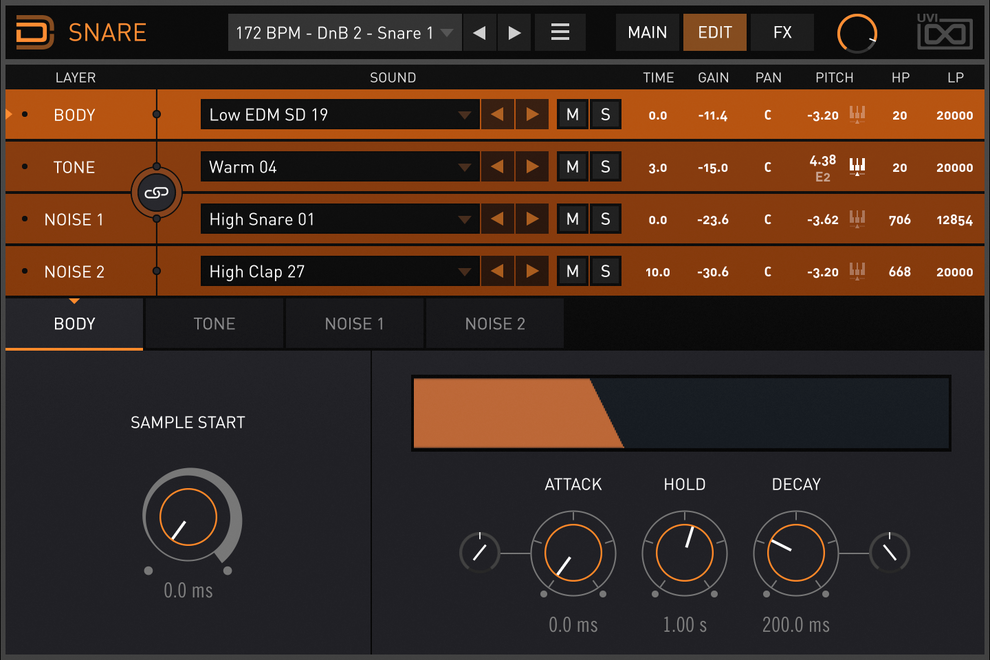
- Clap Engine: The clap engine breaks down the sound into three “shots” and a noise layer. This lets you shape every shot individually, giving you the ability to create unique claps that are completely different from any stock sound.
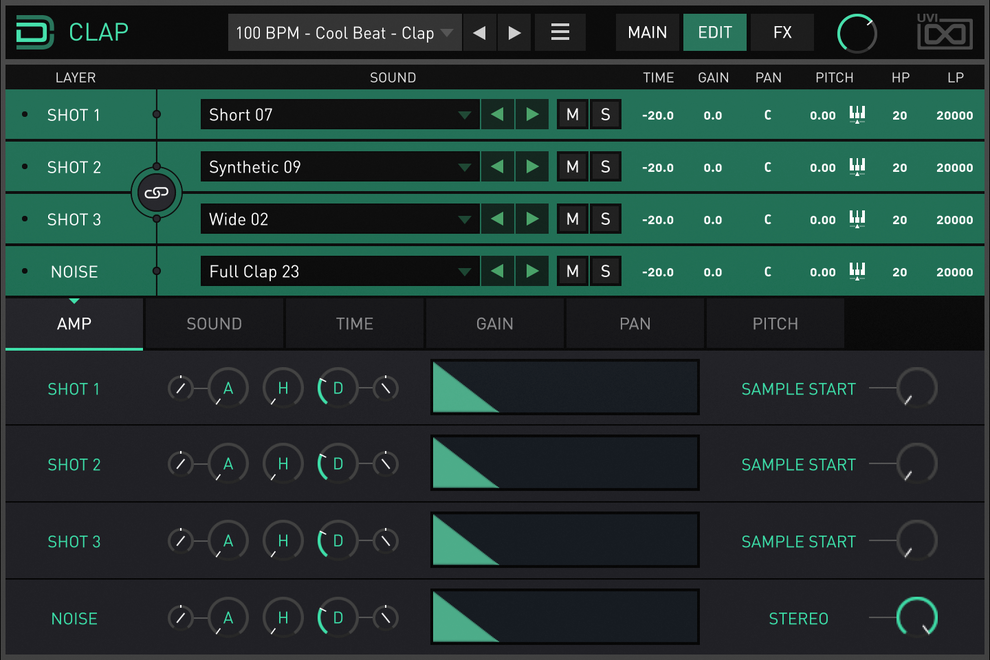
- Cymbal Engine: A versatile engine, as it allows for endless customization of hi-hats, crashes, rides, and even sound effects. The two noise layers in this engine give the cymbals a natural variation with every hit, adding realism to your beats.
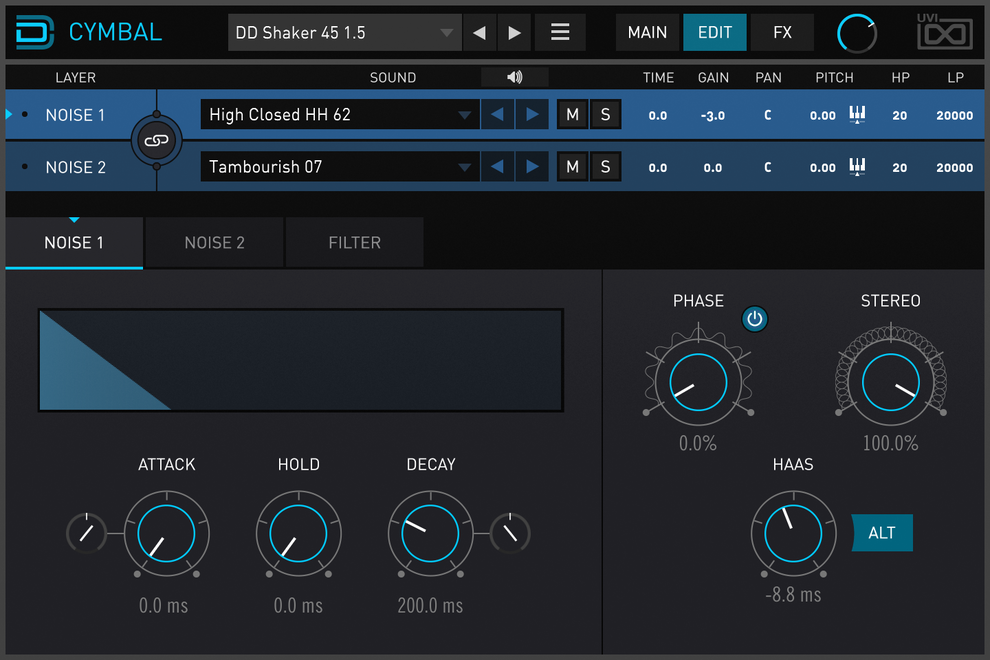
The sequencer
To make Drum Designer fully usable out-of-the-box, We added a sequencer, allowing users to access pre-made sequences. The final step in the process was to collaborate with talented sound designers, ensuring a wide palette of patterns that cater to different artistic styles.

Final though
While a dedicated engine like this brings unmatched efficiency, the scripting itself has certain limitations. The engines could benefit from additional modularity to further expand creative possibilities.
The fact that many of the sounds are dynamically generated allows for a level of live modulation that’s rare in the world of drum design. This wasn’t necessarily planned from the start, but it turns out you can tweak parameters in real time, allowing for evolving sounds during live performances or studio sessions.
Seeing how Drum Designer is now being used by producers around the world to shape the future of rhythm is beyond exciting. I’m proud to have played a part in creating something that truly empowers users to push their sound to new heights.
Feel free to explore more and try it yourself on UVI Website.
